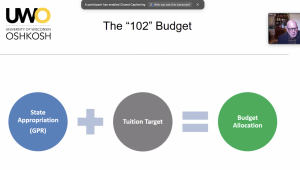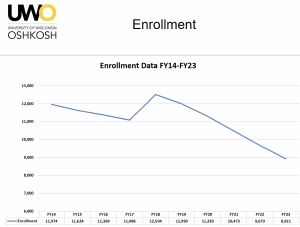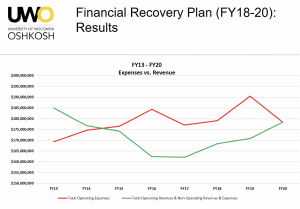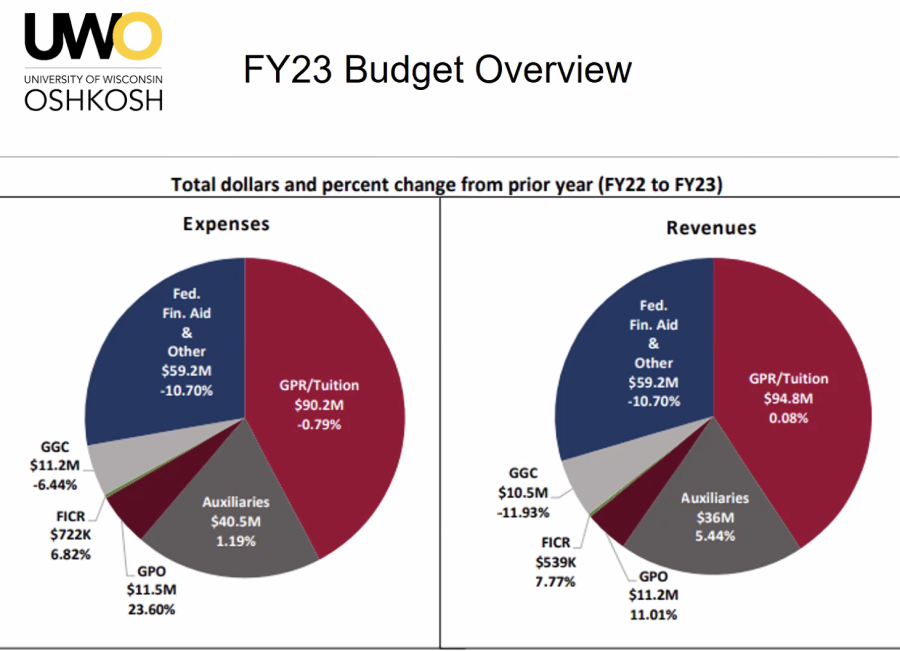Leavitt: No layoffs, all must work on student retention
February 16, 2023
“I’ll go on the record right now,” Chancellor Andrew Leavitt said during a virtual Town Hall meeting Wednesday. “I have never been a proponent of, nor will I ever engage in laying off faculty.”
After a year of low enrollment and poor retention, Leavitt announced earlier this month that there would be budget cuts coming this spring. At Wednesday’s meeting, Leavitt and Provost John Koker discussed their plans for cutting spending and increasing enrollment and retention.
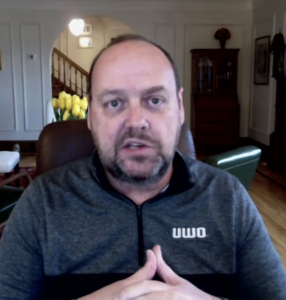
Leavitt also said he also doesn’t see staff layoffs happening.
“I’m not a proponent of laying off huge swaths of people to make our budget work,” he said. “We are not at the point with this current budget situation that we were in the past. We just need to be more vigilant with the cash we have on hand for the remainder of the year and try to keep our reserves at a healthy level.”
Koker said there is two types of money that form their 102 budget.
“We get a state appropriation, which are called general purpose revenue dollars; that’s the state taxpayer dollars. And then we have a tuition target where we collect tuition.”
A major problem in recent years budget has been enrollment. In 2019, UW Oshkosh had 11,990 students enrolled. By spring 2023, UWO has only 8,921 students enrolled.
Tuition payments make up a large portion of the budget, but with the sharp decline in enrollment over the past few years, not as much money has been coming in. This impacts the federal aid UWO receives as well, Koker said
That being said, enrollment isn’t the only reason UWO is in this position.
“[The] fiscal ’23 budget issue we find ourselves in is we had the worst possible worlds collide here,” said Koker. “Our expenses are going to be more than that $90.2 million mostly because of inflation. Things cost us more just like they cost everybody else more.”
With revenue being lower, the university’s goal is to reduce expenses. Some of those expenses include slowing or stopping spending on the “non-essentials” and cutting or combining programs that have few to no students enrolled.
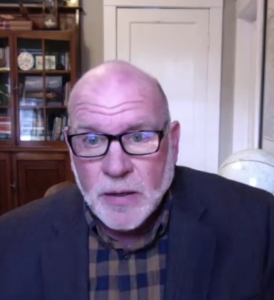
Leavitt and Koker are asking all faculty members to go back and look through what they’re spending money on in an attempt to cut back on unnecessary expenses. They are also asking faculty to reconsider certain travel expenses as a way to cut back.
“If we reduce 50% of our overloads, that will save us a $1 million right there. So we really need to look,” Koker said.
“Certainly we have enrollment projections and we have to align our staff to revenue based on enrollment to make sure that we don’t get into the position where we’re exceeding our revenue,” Koker said. “A big one for all of us to work on is to increase student support and retention.”
But on the positive side, overall retention is up from 81% last year to 87% this year. And after the introduction of the student success navigators, student success is also increasing, they said. The challenge is retaining those new students from semester to semester, as sophomores, juniors and seniors are already retained at a higher rate.
Leavitt and Koker said they will continue to evaluate what they can do to improve student enrollment and success, and asked faculty and staff with ideas to contact them.
Koker also said there has been no plan to offer larger classes and that decisions will continue to be made by the deans as they have always been. In addition, with 90% of the budget tied up in salary, the university can also reduce the budget by holding back on hiring, he added.
“Our budget is still in a relatively firm position, but there are storm clouds on the horizon,” Leavitt said. “There will be a correction, and I think it will be a fairly modest one if we take steps now.”